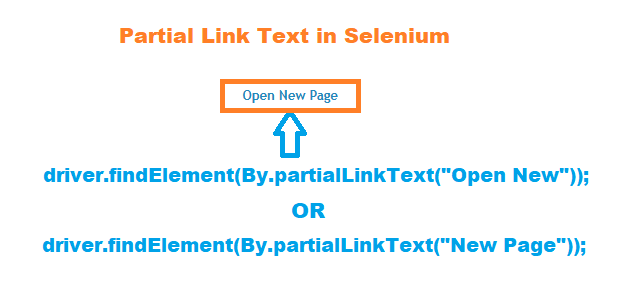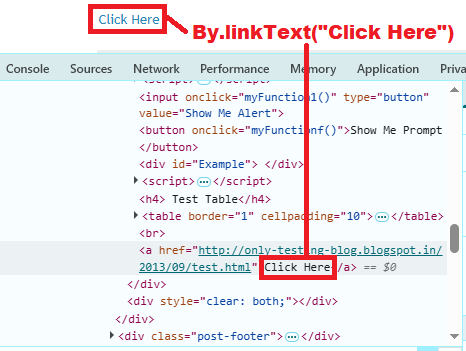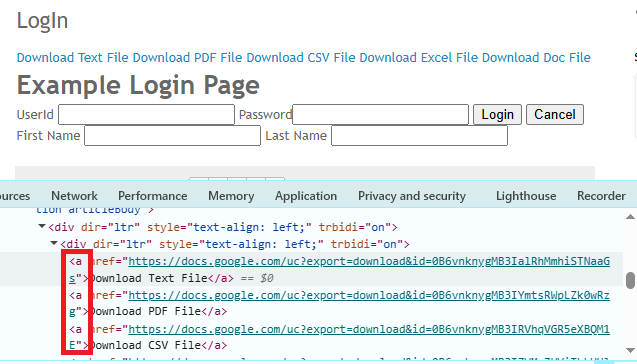Last updated on August 17th, 2025 at 03:00 pm
If you’re new to automation testing, one of the first tools you’ll come across is Selenium. It’s the go-to framework for testers who want to automate web browsers and validate web applications efficiently.
Selenium is not just popular—it’s a must-learn tool for beginners. Why? Because it’s open-source, supports multiple programming languages, and works across all major browsers. Whether you’re looking to automate repetitive tasks, speed up your testing cycles, or gain practical skills that are in demand worldwide, Selenium is the perfect starting point.
In this Selenium tutorial for beginners, we’ll walk through everything you need to get started:
- Step-by-step setup of your Selenium environment
- Writing your very first Selenium script in Python and Java
- Practicing with demo websites designed for automation testing
- Exploring locators, advanced actions, and frameworks
- Recommended learning resources to continue your journey
By the end of this guide, you’ll have a strong foundation to start building and running your own Selenium tests.
What is Selenium?
Selenium is an open-source automation tool designed for testing web applications. Unlike manual testing, where you interact with a browser yourself, Selenium allows you to write scripts that can perform these actions automatically.
Key Features of Selenium

- Open-source and free: Anyone can use it without licensing costs.
- Multi-language support: Works with Java, Python, C#, Ruby, and more.
- Cross-browser compatibility: Supports Chrome, Firefox, Safari, Edge, and others.
- Cross-platform execution: Run tests on Windows, macOS, and Linux.
- Integration ready: Works with popular testing frameworks like TestNG, JUnit, and PyTest.
Use Cases of Selenium in Automation Testing

- Automating repetitive functional tests for web applications
- Validating form submissions, buttons, and navigation flows
- Testing across different browsers and operating systems
- Running regression tests after code changes
- Supporting Continuous Integration (CI) pipelines in DevOps
In short, Selenium acts as the bridge between your code and the browser, helping you simulate real user interactions with speed and precision.
Why Use Selenium?
Selenium has become one of the most widely used automation testing tools, and for good reason. Here’s why every beginner in test automation should learn it:
- Automates repetitive testing tasks: Instead of manually repeating the same tests, Selenium scripts can perform them automatically, saving time and effort.
- Cross-browser and cross-platform support: Write once, run anywhere. Selenium works across all major browsers (Chrome, Firefox, Edge, Safari) and operating systems (Windows, macOS, Linux).
- Works with popular programming languages: Whether you know Python, Java, C#, or Ruby, Selenium lets you write tests in the language you’re most comfortable with.
- Integrates with frameworks: Selenium works seamlessly with testing frameworks like TestNG, JUnit, and PyTest, making test management and reporting more structured.
In short, Selenium is versatile, powerful, and the perfect tool for beginners to step into the world of automation testing.
Step-by-Step Selenium Tutorial for Beginners
Now that you know why Selenium is important, let’s walk through how to actually set it up and start writing your first test.
Step 1: Set Up Environment
Before you can begin automation, you’ll need to prepare your setup.
- Install a programming language
- Python (easy for beginners) → download from python.org
- Java (widely used in the industry) → download from oracle.com
- Install Selenium WebDriver
- For Python: pip install selenium
- For Java: Add Selenium dependencies in your Maven pom.xml or Gradle build file.
To learn how to download Selenium WebDriver JAR files and set up Eclipse IDE for writing Selenium test scripts, check out our complete Selenium setup guide.
Step 2: Download Browser Driver
Selenium needs a browser driver to communicate with browsers.
- ChromeDriver → for Google Chrome. Learn how to download latest ChromeDriver step-by-step.
- GeckoDriver → for Firefox. You can read our GeckoDriver download guide.
- SafariDriver → for Safari
- EdgeDriver → for Microsoft Edge. Here is how you can download the latest EdgeDriver.
Alternatively, you can use WebDriver Manager to automatically download and manage drivers, so you don’t have to update them manually.
Step 3: Write Your First Selenium Script
Let’s write a simple script that opens a website and interacts with a search box.
Python Example:
from selenium import webdriver
from webdriver_manager.chrome import ChromeDriverManager
driver = webdriver.Chrome(ChromeDriverManager().install())
//Open the URL.
driver.get("https://www.google.com/")
// Get the page title.
title = driver.title
// Print the page title to the console.
print(title)
driver.quit()Java Example:
import org.openqa.selenium.By;
import org.openqa.selenium.WebDriver;
import org.openqa.selenium.WebElement;
import org.openqa.selenium.chrome.ChromeDriver;
import io.github.bonigarcia.wdm.WebDriverManager;
public class FirstSeleniumScript {
public static void main(String[] args) {
WebDriverManager.chromedriver().setup();
WebDriver driver = new ChromeDriver();
//Open the URL
driver.get("https://www.google.com/");
// Get the page title
String pageTitle = driver.getTitle();
// Print the page title to the console
System.out.println("Page Title: " + pageTitle);
driver.quit();
}
}Step 4: Practice Automation
The best way to learn Selenium is by practicing on websites designed for automation testing.
Here are some excellent practice sites:
- The Internet Heroku App → basic UI elements
- ToolsQA Automation Practice Form → form submissions
Practicing on these sites will give you real-world testing experience without worrying about breaking a live site.
Step 5: Learn Locators & Advanced Actions
Selenium scripts rely on locators to find and interact with elements on a webpage.
- Locators: ID, Name, CSS Selector, XPath
- Advanced Actions:
- Handle popups and alerts
- Work with dropdowns and checkboxes
- Upload files and take screenshots
- Switch between windows and frames
- Use waits to synchronize tests with page loading
Mastering locators and actions is essential for building reliable automation scripts.
Step 6: IDE and Framework Setup
Once you’re comfortable with basic scripts, it’s time to make your setup more professional.
- Recommended IDEs:
- Python → PyCharm, VS Code
- Java → Eclipse, IntelliJ IDEA
- Test Frameworks:
- Python → PyTest
- Java → TestNG, JUnit
Frameworks help you structure your tests, generate reports, and manage test execution efficiently—skills that are highly valuable in real-world automation projects.
Recommended Learning Resources
Learning Selenium becomes much easier when you have the right study materials. Here are some trusted resources to help you master Selenium step by step:
- Selenium Official Documentation → The most reliable source for up-to-date installation steps, features, and official examples.
- BrowserStack Selenium Guide → A comprehensive beginner-friendly guide with code examples in both Python and Java.
- ToolsQA Selenium Tutorials → Well-structured lessons that take you from basics to advanced topics.
- Edureka Selenium Tutorial (YouTube) → A complete video walkthrough covering Selenium setup and real-world testing.
These resources will help you learn Selenium in a structured way while also giving you enough hands-on practice.
Final Tips for Beginners
Before you wrap up your first Selenium tutorial, here are some final tips to keep your learning journey smooth:
- Start with simple scenarios → Don’t rush into advanced topics. Begin with automating basic test cases like opening a webpage or filling out a form.
- Use demo practice sites regularly → Sites like ToolsQA or Swag Labs are designed for beginners and help you build real testing skills.
- Keep Selenium & drivers updated → Browsers change frequently, and using outdated drivers can cause errors. Regular updates keep your tests running smoothly.
- Explore free online courses and YouTube tutorials → Video-based learning helps you understand concepts faster, especially if you’re a visual learner.
By following these tips, you’ll avoid common beginner mistakes and steadily grow your confidence in test automation.
Frequently Asked Questions (FAQs)
1. What is Selenium mainly used for?
Selenium is primarily used for automating web browsers. It helps testers validate website functionality, run regression tests, and save time by automating repetitive testing tasks.
2. Is Selenium easy for beginners?
Yes, Selenium is beginner-friendly. With basic knowledge of Python or Java, you can quickly write your first script. Plus, there are many free tutorials and demo sites to practice on.
3. Do I need coding skills to learn Selenium?
Yes, a basic understanding of programming is recommended. Selenium supports languages like Python, Java, and C#, so knowing the fundamentals of one language will make learning much easier.
4. Which language is best for Selenium beginners?
Python is the easiest language for beginners due to its simple syntax. However, Java is widely used in the industry, making it a great choice for long-term career growth.
5. Can Selenium be used for mobile testing?
Yes, Selenium can be extended for mobile testing by integrating with tools like Appium, which allows you to test both Android and iOS applications.

Hi, I’m Aravind — a seasoned Automation Test Engineer with over 17 years of hands-on experience in the software testing industry. I specialize in tech troubleshooting and tools like Selenium, Playwright, Appium, JMeter, and Excel automation. Through this blog, I share practical tutorials, expert tips, and real-world insights to help testers and developers improve their automation skills.In addition to software testing, I also explore tech trends and user-focused topics, including Snapchat guides, codeless test automation, and more.




67 thoughts on “Selenium Tutorial for Beginners”
This is brilliant training, so simple to follow. Thank you and can't wait to dig in after you update the remaining days too . Cheers!!!
Great, but please be fast, I am in need of it
This very helpful. Thank you for the details information.
Could you please add managing different windows like popups, alert using selenium webdriver. It would be great if you can provide that information.
Thank you.
I am working on it now and that article will be published very shortly.
This page is very helpful. Thank you.
Thank you for your wonderful job !!
You have published articles on WebDriver and IDE …But why not RC???(I know Driver is most advanced than RC..But giving some information about RC/grid would make your blog complete..)
Thank u for the wonderful post !!
Will publish Grid tutorials very soon. 🙂
Very information very helpful for Selenium beginners
Excellent training and the information provided is very clear
Excellent training the information is very clear and useful
plss upload rest f java tutorials soon 🙂
Awesome, God bless you 🙂
Wonderful!!! …Excellent training….. God bless you 🙂
very useful………………
Very useful … thanks 🙂
Trust me, i have worked on selenium and used this page to refresh my basics and found this content to be simply awesome 🙂
Thanks. This is very useful.
This is just Awesome……. Can i expect Webdirver – Appium in this blog..
Thanks a lot,its very detail
Thanks a lot for these wonderful tutorials, easy to learn and helps a lot !!!
Please publish rest of JAVA tutorials…….
can you please update OOPS concepts and related tutorials?
Appreciate all your efforts, thanks a lot
Very easy Tutorial. Very simple for beginners and covers all the aspects.
Thanks a Lot!!!
Thank you so much.your blog is very helpful.Could you please post any material on Web services testing too?
It was so nice article.I was really satisified by seeing this article and we are
also giving QA online training.The QA online Training is one of the best QA online training institute in worldwide.
One of the best blogs I have ever read,I have completed Part 1 till now. Hats-off to your detailed explanation.
I have a request, if possible please publish a sample project with any real-time examples.
Thanks once again…
Hi
It is really helping for Selenium Starter
Regards,
Amara
Hey Aravind I have seen your tutorials and believe me its a very easy & interesting way to learn Selenium Webdriver.
Awsome content about Selenium Webdriver and very easy to understand indeed > Thanks for posting.
as a fresher who all wanted to go to selenium it would be really helpful for aware of basics and as well as for interviews
Hello, I am new to Selenium and willing to learn it. I found your posts useful. Kindly let me know which website you have used in your example/screenshot.
It will be helpful if you post some topics on DEBUGGING in selenium…
Can any one help me in installing Java in my system. Installing java always gives me error 1602 and therefore eclipse also doesnt work in my system. Help me pls.
Very Very Useful
slenium course navyads good sugssion
How would be work with frame in page object model with TestNG Framework in selenium Webdriver?
Really great work!! much much appreciated.
Very very helpful… Thank you so much!!!
Very helpful article, helped me clear all the necessary concepts.
Thank you so much!
please provide the tutorial for selenium flash testing also
Great blog nice n useful information..
Very nice explanation I am a beginner and find you site today only .I am on the way of learning Data driven framework hope your articles will help me.Thanks
Hi,
Thank You for such a great guidance.
Can u mail me all Part1, part2 and part3.
all three tutorials.
Email ID: sanky1709@gmail.com
Thank You,
Sanky
Very good tutorial for beginner and experience
This is Very GOOD tutorial for beginner and experience.
Thanks
Very Useful Info. Thanks a lot for sharing. Please continue to do this great work.
I really appreciate the amount of hard work you have put to explain Java and Selenium in this post and that too for free of cost. The contents are really useful. Thank You!!
I really Appreciate above work.But it full concept based on Core JAVA.
Awesome blog for selenium tutorials, thanks a lot!!
Awesome blog for selenium tutorials, thanks a lot
Great content. Thanks for sharing this information. Keep it up. This is great article. I like it very much.
ur all the articles are so helpful. so have explained the things in very easy way. and it so easy for beginners to understand
Exception in thread "main" java.lang.IllegalStateException: The path to the driver executable must be set by the webdriver.gecko.driver system property; for more information, see https://github.com/mozilla/geckodriver. The latest version can be downloaded from https://github.com/mozilla/geckodriver/releases
pls help me to solve this problem
Since WebDriver version 3 you need a separate executable, geckodriver.exe, in order to driver firefox. First, download geckodriver from that github link. Then, put it someplace where you store your project files. Then, in the beginning of your main method, put this:
System.setProperty("webdriver.gecko.driver", "path to the folder you put it in\geckodriver.exe");
Afterwards you can go on to create new FirefoxDriver and all other stuff.
Very helpful tutorials. Straight to the point! Thank you.
Hi @kapil khedkar, please follow this link: https://github.com/eviltester/startUsingSeleniumWebDriver to solve your problem
Really an excellent stuff on Java essentials for Selenium. Appreciate the above work. Thanks.
This comment has been removed by the author.
such a greatful content about the JAVA Training ..
Keep sharing
Hi sir,
awesome tutorial sir,i learned a lot from this.
I am new to java, is it enough to get the job as fresher java Developer?
Hi,
is it enough to get place as java developer fresher?
please replay anyone
wow, very Nice information about web driver, Really I like this Article, Recently I was finished my Webservices training in Bangalore and achieve my success through online Seleniumlabs, this training center was very helpful to make a bright your future.
Thank you
Keep Blogging
It's very usefull information about about selenium webdriver.
Nice post.
Nice post.